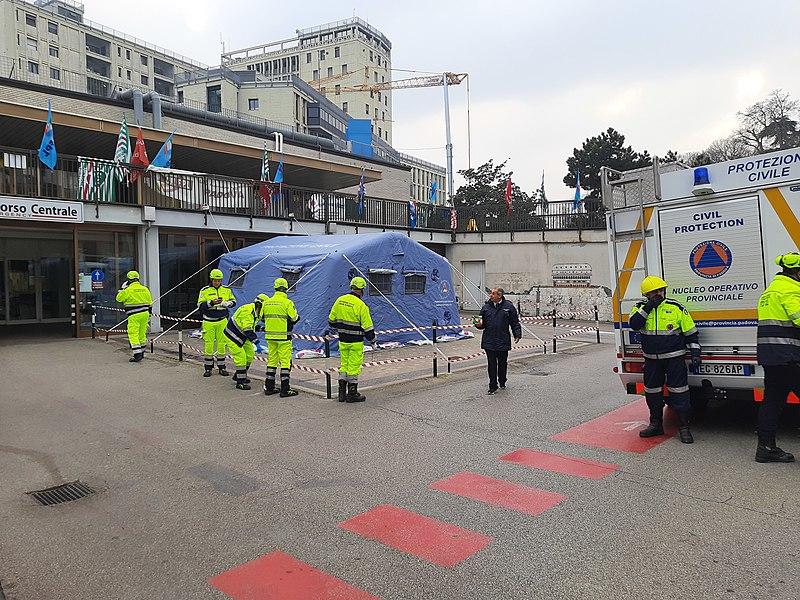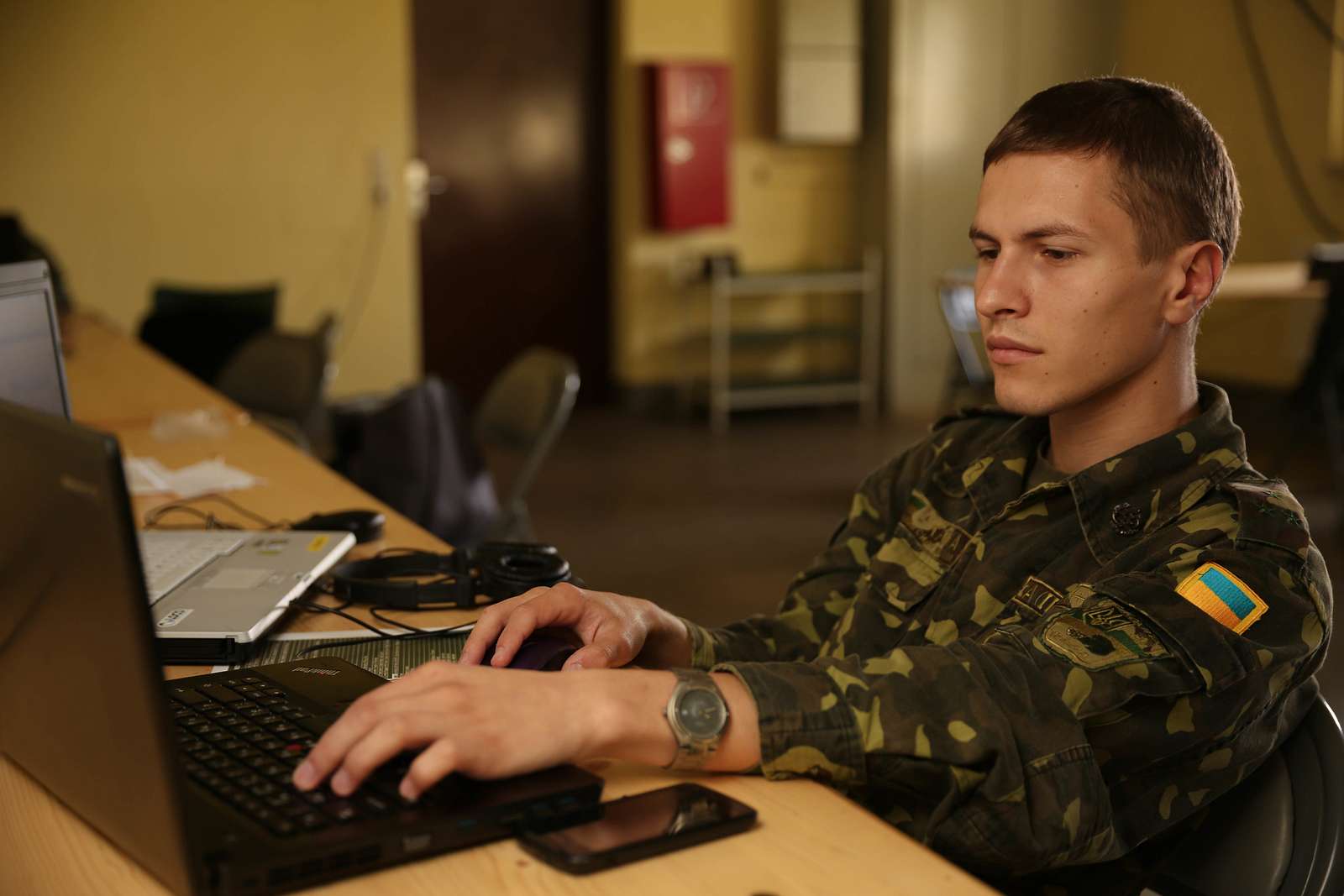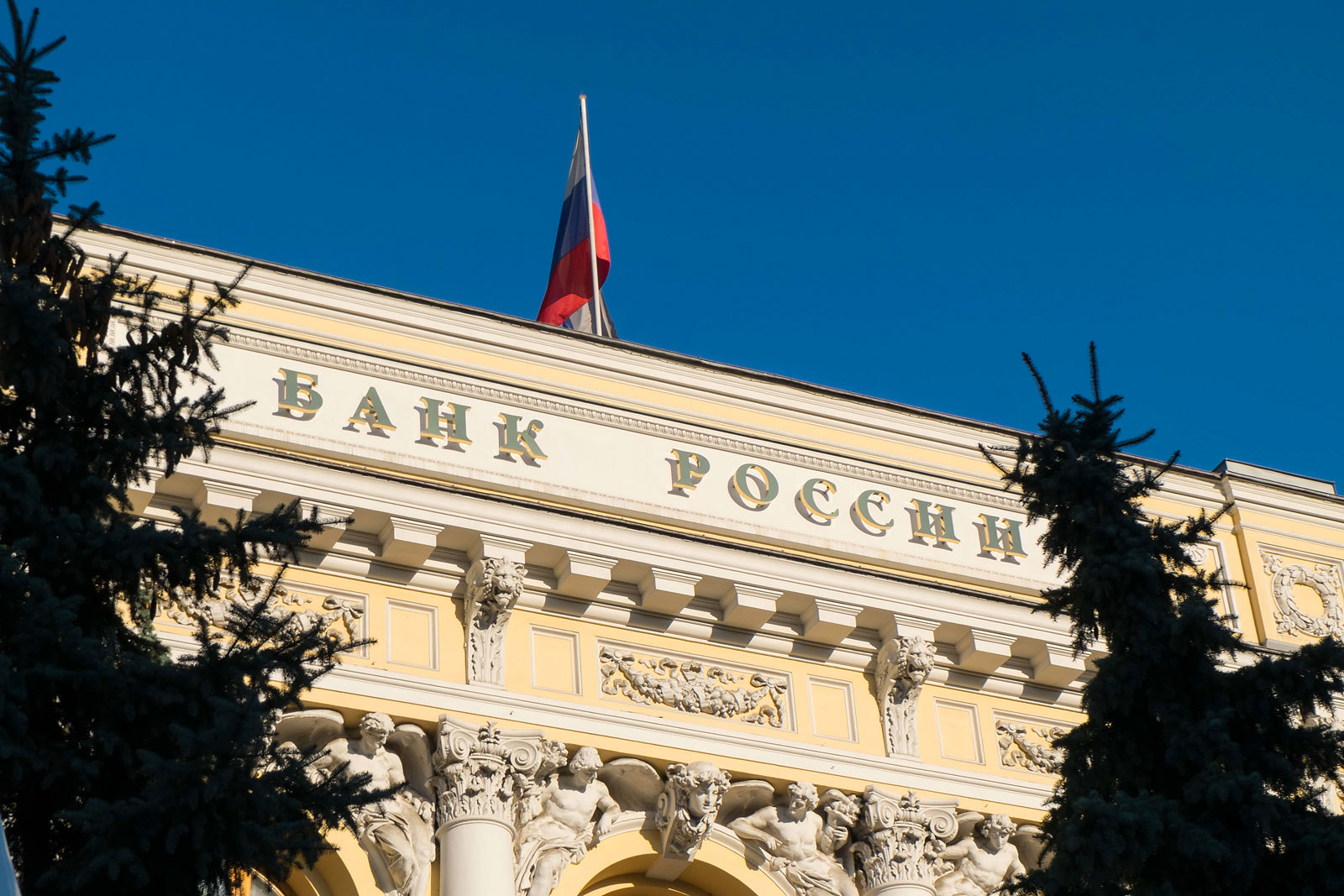How Italy Is Handling the Coronavirus
Italy is at the center of the coronavirus outbreak in Europe. So how is it responding?

Published by The Lawfare Institute
in Cooperation With

A month ago, if you had asked Italians to locate the town of Codogno on a map, many of them would not have succeeded. Codogno is a small town with a population of 16,000, situated at the edge of Italy’s Lombardy region. Italians from outside the region, like myself, have never given it much thought. Certainly nobody would have expected that Codogno would gain international notoriety.
But now all Italians know Codogno as the center of the country’s sudden outbreak of disease caused by the novel coronavirus (COVID-19). On Feb. 21, the first case of COVID-19 not linked to China was discovered in Codogno—a couple of weeks after two Chinese tourists visiting Italy and an Italian citizen repatriated from Wuhan, China, fell sick. Since Feb. 23, the town, along with nine neighboring municipalities in the same corner of Lombardy and one in the region of Veneto, has been designated as a “red zone”: No one can enter, and the 47,000 people within the zone cannot leave.The local Radio Codogno, now known as Radio Red Zone, has been broadcasting news and updates but has also shared airtime with priests to celebrate the 10 a.m. Mass and has organized “storytime” for younger listeners whose schools have been closed. Teachers have started sending out homework via WhatsApp. People leave care packages for friends and family on the perimeter of the red zone. And the municipality of Codogno itself has launched an initiative to collect photos, videos, short stories—and, of course, memes—to document how locals are dealing with these unique circumstances.
Italy is currently reporting the third-highest number of identified cases of COVID-19 after China and South Korea, though it’s not clear why the outbreak spread here so rapidly. But in a globalized world, Italy is far from alone. Within Europe, a growing number of cases are appearing in France, Germany and the United Kingdom.
All of Italy’s 20 regions have registered at least one case of COVID-19, though the regions where the majority of cases are clustered are more globally connected than many other parts of Italy. Lombardy’s and Veneto’s metrics under the Trade Openness Index, which measures a region’s exposure to international trade, are 67 percent and 69 percent, respectively, the highest in the country. For comparison, Tuscany’s is 53 percent, Latium’s is 30 percent, and the lowest Trade Openness Index is Calabria’s—the tip of the boot—at 3.76 percent. Before the establishment of the red zones, a number of people traveled to and from Codogno, unknowingly carrying the disease with them across the peninsula. And since then, some individuals have violated the quarantine, leaving the areas recklessly or out of frustration.
At the time of writing, there have been 4,636 cases in Italy—more than 75 percent of them in the regions where red zones have been declared. Of those cases, 197 people have died—mostly elderly individuals and those with immune systems weakened from preexisting conditions—and 523 have recovered from the illness (the Italian government has been publishing updated numbers here every day at 6 p.m. Central European Time). The Codogno resident dubbed “patient one” is still fighting for his life, though it’s not clear how he was infected with the virus.
The response to the virus from the Italian national government and the country’s regions has been heavily shaped by some features specific to Italy. Regional governments’ autonomy has left them with a large share of the initial responsibility for responding to the outbreak, while the national government has the responsibility for efforts to mitigate the economic consequences and manage the foreign-relations component of the response. Italy’s fractious politics are, as ever, an important backdrop to the situation. And a key set of institutions have enabled a generally proactive response across multiple fronts.
National and Regional Responses
Since the fall of the Roman Empire, Italy has been characterized by municipalism, the cultural, bureaucratic and administrative echoes of which remain present today. Until unification, Italy was an ensemble of independent city-states, duchies, republics and kingdoms. With Italy’s unification in 1861, the new kingdom’s statesmen opted for a centralized system to consolidate this new union and avoid any impetus toward local autonomy. Centralization was also favored by the Italian fascist regime that came to power in 1922. After World War II, the Italian Constituent Assembly was tasked to write the constitution for the Italian Republic, which promulgated a complex system of autonomous territories including municipalities, provinces and regions, all operating under the national government. Between 1970 and 2001, regions progressively became fully operational, with powers and resources transferred from the national government under Article 117 of the Italian Constitution. Other articles further specify regions’ authorities and political structures—under Article 122, each region elects its own president.
This is all important with respect to the challenge posed by COVID-19. Regional presidents have authority in cases of health emergencies, and they are equipped with powers to issue emergency ordinances—which they have done in responding to the outbreak. At the same time, the national government has also exercised its own powers. The first coronavirus-related ordinance issued in Lombardy on Feb. 21, aimed at the towns of interest identified as “at risk,” ordered the suspension of public (including religious) gatherings, commercial activities, and work activities, except for those offering essential services; prohibition of attending recreational activities and sporting events even outside the “at risk” areas; suspension of schools; and halting of public transport. As new cases emerged, the president of Lombardy extended these measures to the whole region on Feb. 23, including the bustling city of Milan, the engine of Italy’s economy. That was also the day the red zones were established by a decree of the president of the Council of Ministers—the head of the national government—in accordance with the Ministry of Health, along with the regional presidents of Lombardy and Veneto.
The national government has expansive legal authority to limit movement to and from red zones. In Italy, freedom of movement is safeguarded by Article 16 of the Italian Constitution—but the constitution also provides for its restriction for public health and security reasons. Furthermore, Article 650 of the Italian Criminal Code allows for a fine or up to three months in jail in case of violation of decrees issued on the grounds of public health or security.
In addition to the national government’s decision to establish red zones, nationwide measures have now been put in place with a new decree of the president of the Council of Ministers. Along the lines of the Lombardy ordinance, the decree entails the suspension of schools and universities countrywide until March 15, as well as other nonessential and leisure public gatherings and events such as concerts that cannot guarantee sufficient interpersonal safety distance (of at least one meter). Even Italy’s second religion—soccer—has been affected, with matches postponed or played behind closed doors. Nevertheless, outside of the red zones, museums, offices and commercial activities remain open at the discretion of managers, companies and business owners.
These measures are aimed at containing and slowing down the spread of the virus in light of the exponential growth in the number of patients needing intensive care. The goal is to avoid overburdening the country’s health care structures before the contagion has reached its peak and to safeguard the medically fragile segment of the population. The effectiveness of such measures will become clear over the coming weeks, and additional steps could follow as the situation develops. The response is a constant work in progress informed by the data collected daily.
At points, the division of authority between regional and national officials has caused tensions. Prime Minister Giuseppe Conte spent the day of Feb. 23 appearing on TV shows to talk about the emerging crisis. During one appearance, he criticized the hospital in Codogno for not implementing effective protocols to prevent further contagion (an accusation he subsequently retracted). On another occasion, he suggested that the regions are not equipped to deal with a crisis of this magnitude and that it may be necessary to curb the powers of regional presidents in favor of national coordination and collaboration. This sparked a heated exchange between regional officials and the national government, with the former blaming the latter for its inability to manage a foreseeable outbreak while regional and local entities took major steps to contain the virus.
This lack of unity at the beginning has contributed to the government’s initial struggle to demonstrate control of the situation and to adopt a credible narrative early on to reassure its citizens, as well as the rest of the world. The constitution clearly marks oversight of the economy as a responsibility of the national government to a much greater degree than the regions. The potentially severe economic consequences of the coronavirus crisis, therefore, represent a stark challenge, and one largely incumbent on the national government to confront. Estimates of the repercussions on the Italian economy look dire: The tourism sector has already taken a hit as cities like Venice empty out, and it will only worsen if the situation is prolonged until after the Easter vacation period. Supply chains in the regions of Lombardy and Veneto have slowed down, and there are concerns about the ramifications for “Made in Italy” exports—all the more so because China is one of the major markets for such products. Finally, livestock and agricultural production (including wine), which requires constant care, is inevitably being hindered within the red zones.
Given the risks at stake, the national government has begun to announce steps to correct these initial shortcomings. For example, the Ministry of Foreign Affairs is actively working to safeguard the market for “Made in Italy,” announcing 716 million euros to support impacted businesses. Foreign Minister Luigi Di Maio is also pressing to reduce travel restrictions, like flights that have been blocked to and from areas in Italy outside of the red zones.
In a country where governments are perpetually at risk—the Italian Republic is on its 66th government in the 74 years since its post-World War II founding—it matters a great deal whether or not the government appears to have control of the situation. Before the outbreak, the government led by Conte was under attack by former Prime Minister Matteo Renzi’s social-liberal party (which is part of Conte’s coalition government) with threats of a no-confidence vote. Since the coronavirus crisis emerged, these specific quarrels seem to have halted, at least temporarily. Nevertheless, political opportunism is never wholly absent. The leader of the populist-right-wing Lega Nord party, Matteo Salvini, didn’t miss the chance to attack Conte and the government (especially Health Minister Roberto Speranza), accusing them of initially underestimating the scale of the challenge and criticizing them for dismissing the Lega’s call for enhanced controls and quarantine before the outbreak in Italy. Giorgia Meloni, from the national-conservative opposition party Fratelli d’Italia, also accused Conte’s government of first underestimating the threat posed by COVID-19 and then mismanaging the situation to such a degree to give the impression that Italy was on the brink of catastrophe.
In addition to initial economic measures taken, including freezing mortgage and utility bill payments for those in the affected areas, the government is working on an economic emergency decree to gather additional resources to tackle the crisis and provide longer-term support to the people and economic sectors affected. About 7.5 billion euros are on the table: The government doubled the figure from the 3.6 billion euros originally envisaged, since opposition parties had voiced reluctance to approve the measure, deemed insufficient. In fact, the government will need Parliament’s authorization (with an absolute majority) to increase Italy’s deficit (counting on the flexibility of the European Union).
Institutions on the Front Lines
Crises like public health emergencies are a test of the institutions charged with responding to them and the authorities that govern those institutions. In the case of Italy’s coronavirus crisis, that means the regionally based national health system, law enforcement and military forces, and the Civil Protection Department, which is charged with managing emergency response.
The Servizio Sanitario Nazionale, Italy’s national health system—while imperfect in some respects—provides free health care to all citizens, and Italians have confidence in the public health system. There aren’t widespread cases of quarantine breakouts or people searching for better doctors or hospitals elsewhere because, by and large, they’re satisfied with the ones they have. This is crucial in avoiding the sort of sustained and widespread panic that could make the crisis much more challenging—and that might be more likely if other countries without wide access to quality health care implemented similarly aggressive containment strategies. Hospitals are equipping themselves with external structures to triage and test incoming patients and establishing protocols for those who test positive, working with the principal infectious disease hospitals in the country. Testing has been comparatively more widespread and organized than in the United States, for example, where the government has been criticized for its slow approach to ramping up testing.
Italian law enforcement and the military have been responsible for manning checkpoints. This includes the Carabinieri, a gendarmerie force with no equivalent in the United States, which is both one of Italy’s primary law enforcement agencies and a formal branch of the Italian Armed Forces. Having such a force available has proved vital to enacting a quick response—in effect, a streamlined process that countries without a gendarmerie force might lack. In the United States, for example, National Guard units are often involved in emergency response, but their role, authorities, and chain of command are governed by laws that determine whether they are under the control of their state’s governor or the president—and active-duty military forces’ domestic deployment is restricted by the Posse Comitatus Act. The Italian military has also played a crucial role in repatriating citizens from China, hosting them on-base for quarantine, making its medical personnel available to support the national health care system, and preparing structures and military hospitals to host patients if needed.
Finally, the Protezione Civile (the Civil Protection Department) is the national body responsible for managing emergency events, coordinating and supporting all forces from the state to the local level. It also has a voluntary component and has been actively conducting information campaigns, manning regional hotlines to keep emergency lines free, distributing face masks in affected areas, gathering data, and providing general support like coordinating for triage hospital areas to be manned.
A State of Uncertainty
Writing for the Atlantic from Bologna, Anne Applebaum perfectly captures the difficulty of dealing with an “invisible threat,” describing how the uncertainty created by invisibility can be manipulated to spread misinformation or serve political ends.
Global media coverage has often lacked precision, speaking of the crisis in Italy without geographic specificity; after all, Codogno is closer to cities in France and Switzerland than it is to Rome. Domestically, some media outlets have contributed to the hype with alarmist titles, offering partial information or presenting data without context because sensationalism sells. The government has taken steps to counter inaccurate information by working with big tech companies (Google, YouTube, Facebook and Twitter) to favor the spread of correct information: If users search the words “coronavirus” or “COVID-19” (or any variation) on the aforementioned platforms, the first results, highlighted for users, indicate reliable websites such as those of the Italian Health Ministry and the World Health Organization.
Both Italian and international reporting on the scope of the crisis has sometimes lacked a necessary degree of nuance: With a certain level of disruption, Italy is still functioning, and people generally carry on their daily lives. Yet, it is a crisis, nonetheless. The response of the Italian national government and the country’s regions has been heavily shaped by Italy’s political structure—which has in some cases constrained the response to the outbreak, but has also enabled the nation to mobilize.
Cooperation from the bottom up is fundamental in limiting the reach of the coronavirus. Along with government action, temporary adjustments to daily habits and routines are needed, starting from the way we Italians greet each other: kiss on the right cheek, kiss on the left cheek. Except for very few cases, Italians have been patient and resilient, proactive in getting tested and opting for self-quarantine if they’ve tested positive or knowingly had contact with affected areas or people. Ultimately, building and maintaining trust between Italian citizens and institutions through efficient communication by government authorities and accurate media coverage will be necessary to overcome the risk.





